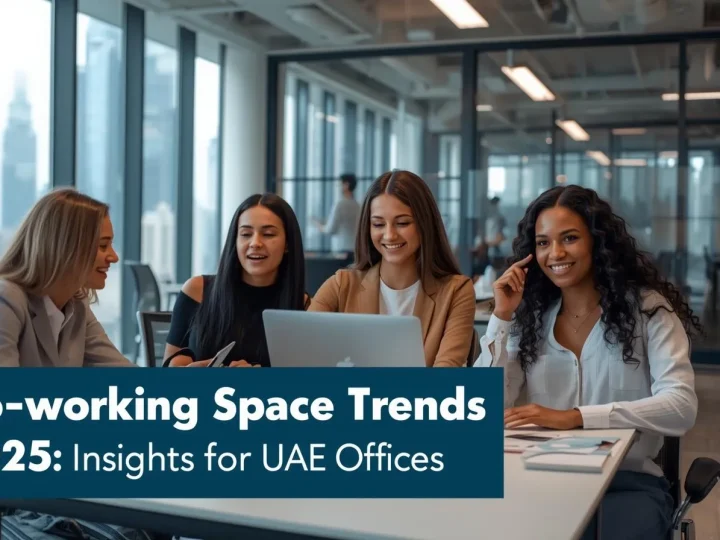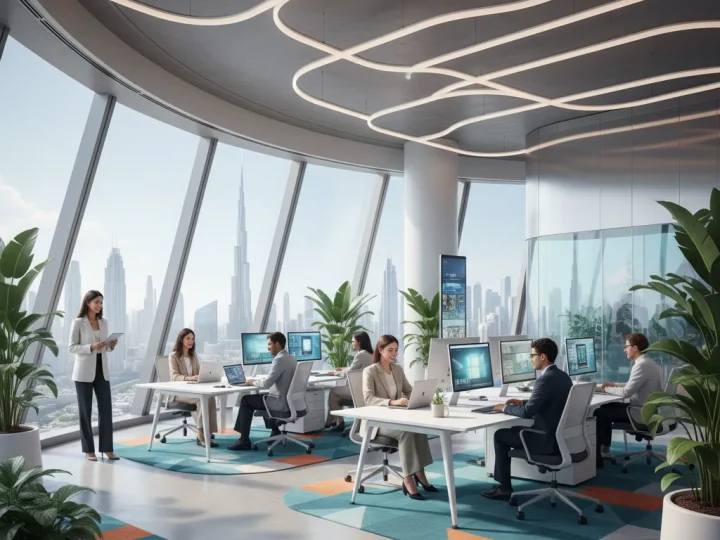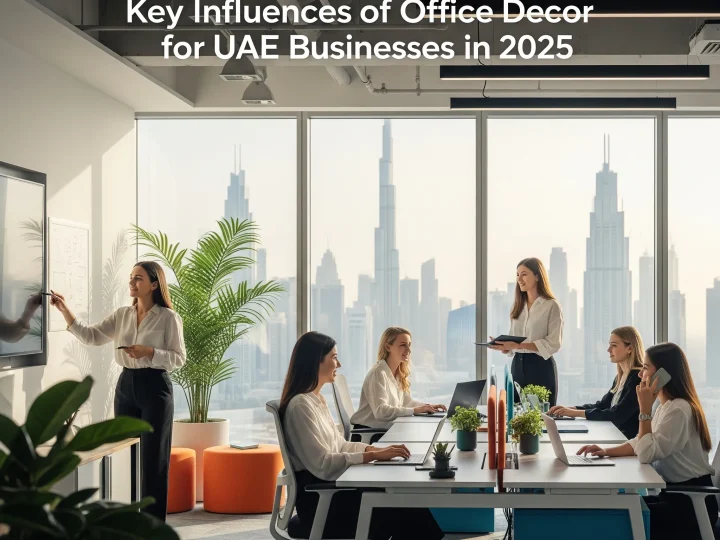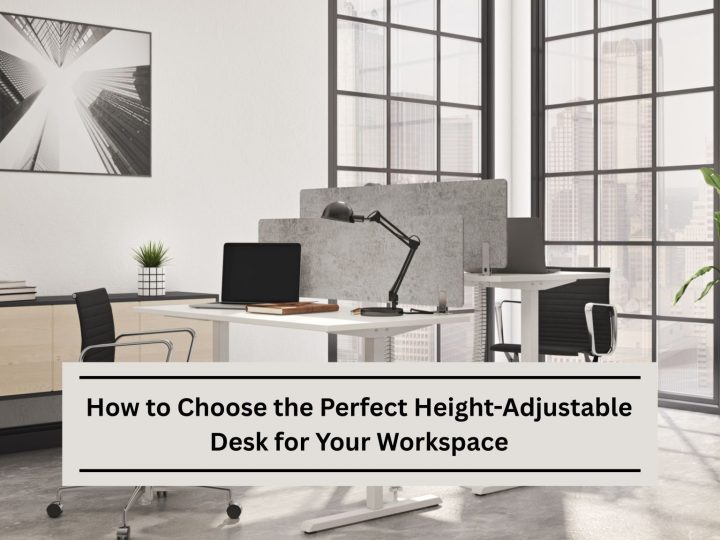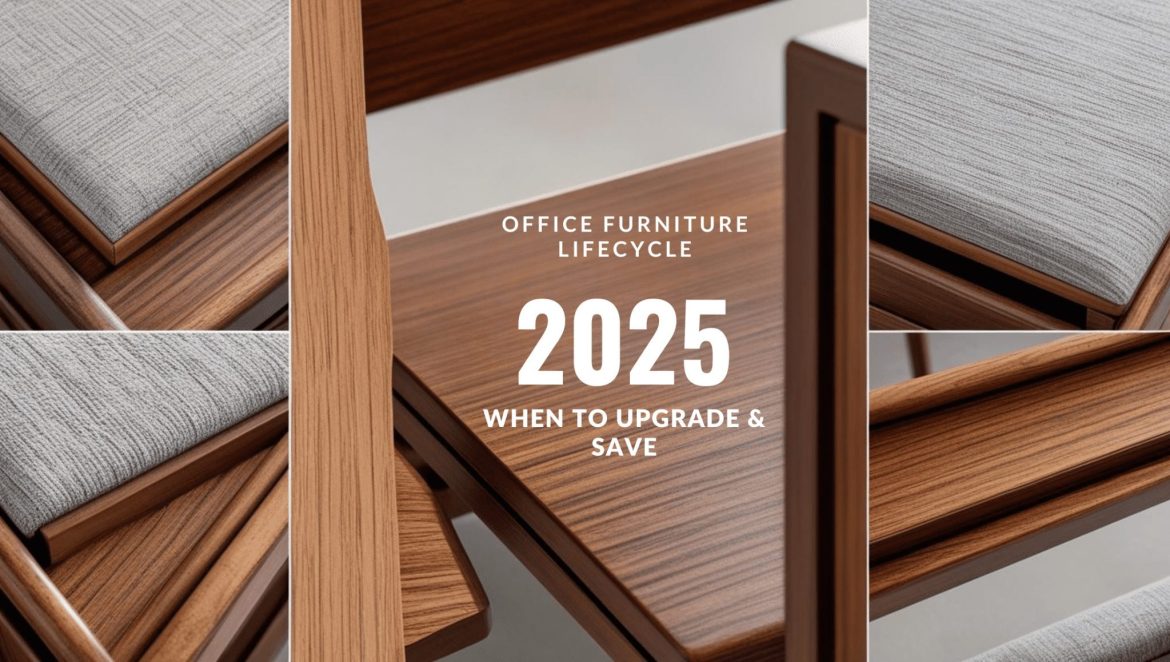

The lifecycle of office furniture is more crucial than ever in today’s business world. Many companies overlook that the average office chair maintains functionality for just 7 to 15 years. But here’s the kicker: even a well-made chair can lose its value long before reaching the end of its physical lifespan. This is primarily due to rapid changes in work environments and employee needs. By understanding when to upgrade, businesses can not only save money but also enhance productivity and employee satisfaction.
Table of Contents
- Office Furniture Lifecycle Basics
- Factors Affecting Furniture Lifespan
- Identifying Wear & Replacement Signs
- 2025 Trends Cost & Upgrade Tips
Quick Summary
| Takeaway | Explanation |
|---|---|
| Consider Total Cost of Ownership | When purchasing office furniture, evaluate not just the initial cost but also durability, maintenance, and disposal costs to ensure long-term value. |
| Emphasize Quality and Maintenance | Investing in high-quality materials and implementing regular maintenance can extend the lifespan of furniture by several years, enhancing overall durability. |
| Identify Signs for Replacement | Regularly inspect furniture for structural integrity and functional performance degradation to determine when to repair, refurbish, or replace items. |
| Adapt to Hybrid Work Trends | Prioritize flexible, modular furniture solutions that can adapt to changing work patterns and office density assumptions reflective of hybrid work models. |
| Explore Innovative Procurement Options | Consider models like Furniture-as-a-Service and certified remanufactured options to lower initial costs and address lifecycle management effectively. |
Office Furniture Lifecycle Basics

Understanding the office furniture lifecycle is essential for businesses looking to make smart investments and reduce their environmental footprint. From acquisition to disposal, every piece of furniture goes through distinct phases that impact its value, functionality, and sustainability.
The Five Stages of Office Furniture Life
Office furniture follows a predictable journey through five key stages, each presenting opportunities for optimization and cost savings.
Stage 1: Acquisition
The lifecycle begins with the purchase decision. Smart businesses in the UAE consider not just the immediate cost, but the total cost of ownership. This includes evaluating durability, warranty terms, maintenance requirements, and eventual disposal costs. When selecting new office furniture, think beyond the showroom appeal and consider how the pieces will perform over time.
Many Dubai entrepreneurs and facility managers are now prioritizing modular and adaptable furniture systems that can evolve with their growing businesses. These flexible solutions often deliver better long-term value despite potentially higher upfront costs.
Stage 2: Active Use
During this phase, furniture serves its primary function in your workspace. The duration of this stage varies significantly based on furniture quality, usage patterns, and maintenance practices. High-quality office furniture typically maintains its functionality for 7-15 years, though aesthetic preferences may change more frequently.
Regular maintenance extends this phase. Simple practices like tightening loose screws, lubricating moving parts, and prompt cleaning of spills can add years to furniture lifespan. For UAE businesses dealing with occasional sandstorms and high humidity, protective measures are particularly important.
Stage 3: Refurbishment
When furniture shows signs of wear but remains structurally sound, refurbishment presents a cost-effective alternative to replacement. This might include reupholstering, refinishing surfaces, or replacing worn components. Many Dubai-based office furniture specialists now offer professional refurbishment services at a fraction of replacement costs.
According to lifecycle assessment research, remanufactured office furniture has significantly lower environmental impacts compared to newly manufactured items, making this stage both economically and environmentally beneficial.
Stage 4: Redeployment or Resale
Furniture that no longer serves your needs might still hold value for others. UAE startups often benefit from purchasing quality used furniture at substantial discounts. For larger organizations, this might mean relocating furniture between departments or offices based on changing needs.
A growing secondary market exists in Dubai for quality used office furniture. Many facility managers establish relationships with office furniture dealers who can handle the resale of unwanted items, often providing removal services as part of the arrangement.
Stage 5: End-of-Life
When furniture can no longer be used or refurbished, responsible disposal becomes critical. Unfortunately, office furniture end-of-life management varies significantly worldwide, with landfill disposal still common in many regions while countries like Sweden have established partial recycling practices, as research shows.
In the UAE, furniture recycling infrastructure continues to develop. Responsible businesses partner with waste management specialists who can separate components for recycling, minimizing landfill impact.
Lifecycle Assessment Considerations
A comprehensive approach to office furniture management should consider the full environmental impact across the lifecycle. Lifecycle assessment methodologies evaluate impacts across multiple categories, including energy consumption, global warming potential, and waste generation.
For UAE businesses committed to sustainability, understanding these impacts enables better purchasing decisions. Sometimes, the most environmentally responsible choice might be extending the life of existing furniture rather than replacing it with even the most eco-friendly new products.
By taking a strategic approach to office furniture lifecycle management, businesses in Dubai and across the UAE can reduce costs, minimize environmental impact, and create more adaptable workspaces that support their evolving needs.
Factors Affecting Furniture Lifespan
The durability of your office furniture investment is influenced by numerous factors that can either extend or diminish its useful life. Understanding these elements helps UAE businesses make informed decisions about purchasing, maintenance, and replacement strategies.
Quality of Materials and Construction
Material quality stands as the single most influential factor in furniture longevity. According to industry research, high-quality materials can extend furniture lifespan by 10-15 years, accounting for approximately 40% of the impact on overall durability.
When evaluating office furniture in Dubai showrooms, look beyond surface aesthetics to assess construction quality:
- Frame materials: Steel, aluminum, and hardwood frames typically outlast plastic or particleboard alternatives. For desert environments like the UAE, materials resistant to humidity fluctuations prove particularly valuable.
- Joinery methods: Furniture assembled with proper joinery techniques (dovetail joints, mortise and tenon connections, or quality welding for metal pieces) maintains structural integrity longer than pieces held together primarily with adhesives or lightweight fasteners.
- Finish quality: Superior finishes provide protection against scratches, moisture, and UV damage—especially important in Dubai’s intense sunlight conditions where furniture near windows can experience accelerated fading.
Premium office chairs often feature higher density foam that retains its shape after years of use, while economy models may compress within months, creating discomfort and potential ergonomic issues.
Usage Patterns and Intensity
How furniture is used dramatically affects its lifespan. Proper usage and handling can extend furniture life by 5-7 years, contributing approximately 20% to overall durability outcomes.
Consider these usage factors that impact furniture longevity:
- Hours of daily use: A workstation used for 8+ hours daily will naturally deteriorate faster than one used occasionally
- User variation: Furniture serving multiple users experiences more diverse stresses than single-user pieces
- Weight capacity: Consistently exceeding recommended weight limits accelerates structural failure
- Movement patterns: Frequent aggressive movements (pushing, dragging, or leaning) damage structural components over time
This explains why shared spaces in UAE offices—reception areas, conference rooms, and hot-desking environments—often require more frequent furniture replacement than executive offices or specialized workstations.
Environmental Conditions
The UAE’s unique climate presents specific challenges for office furniture durability. Environmental factors to consider include:
- Temperature fluctuations: Extreme shifts between outdoor heat and indoor air conditioning can cause materials to expand and contract, potentially weakening joints
- Humidity levels: Despite climate control, coastal areas like Dubai and Abu Dhabi experience humidity that can affect wood furniture and metal components
- Sunlight exposure: UV radiation fades upholstery and finishes, particularly in offices with significant window exposure
- Air quality: Fine dust particles common in desert environments can infiltrate mechanical components in chairs and drawer slides
Proper positioning within the workspace influences these environmental impacts, potentially adding 4-6 years to furniture lifespan (approximately 15% impact on durability).
Maintenance Practices
Perhaps the most controllable factor affecting furniture longevity is the maintenance of furniture for the office. Regular maintenance can add 8-10 years to furniture life, representing about 30% of the impact on durability.
Effective maintenance practices include:
- Regular cleaning: Removing dust, spills, and debris before they cause permanent damage
- Preventive care: Tightening loose components before they cause structural issues
- Lubrication: Maintaining smooth operation of moving parts in chairs, drawer slides, and adjustable surfaces
- Prompt repairs: Addressing minor damage before it escalates into more serious structural problems
Many UAE facility managers implement scheduled maintenance programs, particularly for high-value furniture items, to maximize return on investment.
Initial Quality vs. Lifespan Economics
The relationship between initial furniture quality and total ownership cost deserves careful consideration. Premium office furniture commands higher upfront prices but typically delivers superior value when analyzed on a cost-per-year basis.
For UAE startups balancing immediate budget constraints against long-term considerations, this equation is particularly relevant. A modestly priced chair might need replacement every 2-3 years, while a high-quality alternative might function properly for 8-12 years despite costing only 2-3 times more initially.
By understanding and actively managing these factors, businesses throughout the UAE can significantly extend their office furniture lifecycle, achieving both economic and sustainability benefits.
Identifying Wear & Replacement Signs
Knowing when to repair, refurbish, or replace office furniture is a crucial skill for UAE facility managers and business owners. Timely identification of wear signs helps prevent safety issues, maintains professional appearances, and enables better budget planning. Here’s how to recognize when your office furniture is approaching the end of its useful life.
Structural Integrity Concerns
The most critical wear indicators relate to structural integrity. These issues directly impact safety and functionality:
Frame Damage
Regularly inspect furniture frames for signs of compromise. Metal frames may show bending, warping, or crack formation at weld points. Wooden frames might display splitting, especially near joint areas. According to sustainability research, structural wear directly affects user safety and should trigger immediate replacement consideration.
In UAE’s commercial environments, where liability concerns are significant, compromised structural integrity represents an unacceptable risk. Pay particular attention to:
- Load-bearing elements showing deformation
- Cracks propagating along stress points
- Wobbly bases that cannot be stabilized through tightening
Joint Stability
Furniture joints naturally loosen over time due to regular use. While minor loosening can often be remedied by tightening fasteners, persistent instability despite maintenance indicates more serious deterioration.
Joints that remain unstable after repeated tightening attempts likely indicate:
- Stripped screw holes
- Deteriorated wood around fastener points
- Damaged connecting hardware
- Weakened adhesives in combination joints
These issues typically signal that replacement is more economical than continued repair attempts.
Functional Performance Degradation
Beyond structural issues, functional degradation significantly impacts workplace productivity and comfort:
Ergonomic Failure
Office chairs and workstations with compromised ergonomic functions create health risks for users. Watch for:
- Height adjustment mechanisms that slip or fail
- Tilt tension controls that no longer hold position
- Lumbar supports that have collapsed or displaced
- Armrests that wobble significantly
In Dubai’s competitive business environment, maintaining proper ergonomics is essential for employee productivity and wellbeing. When ergonomic functions fail consistently despite repairs, replacement becomes necessary.
Operational Mechanisms
Moving components like drawer slides, cabinet hinges, and folding mechanisms often show wear before structural elements. Signs to monitor include:
- Drawers that bind, stick, or no longer close properly
- File cabinet mechanisms that fail to lock securely
- Folding tables with unreliable locking mechanisms
- Casters that no longer roll smoothly or lock effectively
Research on furniture lifecycle design emphasizes that persistent functional issues with adjustable parts and locking mechanisms are key indicators for timely replacement.
Material Degradation
Material deterioration affects both functionality and aesthetics:
Upholstery Condition
Fabric and leather upholstery typically show wear faster than structural components. Watch for:
- Fabric pilling, fraying, or thinning
- Tears that extend beyond simple repair areas
- Discoloration that cleaning cannot remediate
- Compression of padding that creates pressure points
While reupholstering remains an option for high-value pieces, it becomes cost-prohibitive for standard office furniture when multiple issues exist simultaneously.
Surface Deterioration
Work surfaces and finishes can deteriorate in ways that affect functionality:
- Laminate lifting or bubbling from substrate
- Veneer chipping or delaminating beyond spot repair
- Surface finish worn through to underlying material
- Deep scratches or gouges that collect dirt and debris
These issues not only look unprofessional but can also harbor bacteria and complicate cleaning protocols.
Economic Evaluation Framework
Beyond physical signs, economic factors should influence replacement timing:
Maintenance Frequency
Tracking repair frequency provides objective data for replacement decisions. When a piece requires service more than 2-3 times annually, total maintenance costs often exceed the annualized cost of replacement.
Life cycle assessments indicate that delayed replacement of significantly worn furniture increases maintenance costs while compromising indoor environmental quality.
Productivity Impact
In high-productivity environments like Dubai’s business sector, subtle functional issues can have outsized impacts. Calculate the hidden costs of:
- Time lost to furniture adjustments
- Decreased comfort affecting concentration
- Inconsistent functionality causing workflow disruptions
For UAE businesses focused on efficiency, these productivity impacts often justify earlier replacement than physical wear alone might suggest.
By systematically evaluating these indicators, UAE businesses can develop objective furniture replacement schedules that balance immediate costs against long-term value, ensuring workspaces remain safe, functional, and conducive to productivity.
2025 Trends: Cost & Upgrade Tips

As we look ahead to 2025, the landscape of office furniture is evolving rapidly, especially in dynamic business hubs like the UAE. Understanding emerging trends helps businesses make informed decisions when planning upgrades or new office setups. Here’s what forward-thinking UAE businesses should consider for optimal furniture investment strategies.
Budget Allocation Shifts
Office furniture remains a significant investment component in workspace planning. According to JLL’s Global Office Fit-out Cost Guide, furniture accounts for 13%-16% of total office fit-out expenses worldwide in 2025. This substantial portion of the budget deserves strategic consideration.
For UAE businesses planning office renovations or new setups, several factors are influencing budget allocation:
- Localized purchasing: Importing furniture faces increasing logistical challenges and costs, driving more UAE businesses to source locally manufactured options
- Sustainability premiums: Eco-friendly furniture commands higher upfront costs but delivers long-term value through durability and employee satisfaction
- Technology integration: Budget shifts now include allowances for furniture with built-in power, connectivity, and monitoring capabilities
Entrepreneurs in Dubai should plan for these cost considerations when developing office furniture budgets for 2025 and beyond.
The Hybrid Work Revolution
The continued evolution of hybrid work models directly impacts furniture requirements and lifecycles:
Flexibility as Priority
Static, permanent furniture arrangements are giving way to modular, reconfigurable solutions. This shift reflects the need for spaces that can transform quickly based on changing work patterns. Investing in adaptable systems means:
- Selecting desks with mobility features
- Choosing storage solutions that double as space dividers
- Prioritizing lightweight meeting tables that can be easily reconfigured
Density Recalculations
Office density assumptions are changing dramatically. Rather than planning for 100% occupancy, many UAE businesses now design for 60-70% peak usage. This shift allows for:
- More generous individual workspaces
- Expanded collaboration areas
- Better circulation and distancing when needed
Industry forecasts indicate that utilizing only new office furnishings is increasingly seen as outdated in 2025, with flexible, sustainable solutions taking precedence to support hybrid work models.
Innovative Procurement Strategies
The ways businesses acquire furniture are diversifying beyond traditional purchasing:
Furniture-as-a-Service (FaaS)
Subscription models for office furniture are gaining traction in forward-thinking UAE companies. These models offer:
- Predictable monthly expenses instead of large capital outlays
- Easy upgrading as needs change
- Built-in maintenance and replacement programs
- Reduced disposal concerns at end-of-life
Certified Remanufactured Options
Remanufactured furniture offers nearly new quality at 30-50% lower costs. The market for these products is expanding in Dubai, with:
- Professional refurbishment companies providing warranties comparable to new items
- Certification programs ensuring structural integrity and appearance standards
- Custom remanufacturing options allowing for branding and color matching
Relocation Considerations
When planning upgrades or moves, UAE businesses should factor in furniture relocation costs. According to industry data, moving office furniture in 2025 ranges from $200 to $1,500 depending on volume, distance, and labor requirements. This expense should be calculated alongside new purchase costs when evaluating total upgrade expenses.
Technology-Embedded Furniture
The line between furniture and technology continues to blur, introducing new considerations for lifecycle planning:
Smart Furniture Integration
Furniture with embedded technology requires different maintenance approaches and typically has dual lifecycles:
- The physical structure might last 8-10 years
- The technological components may need updating every 3-4 years
This dual lifecycle requires planning for component upgrades rather than complete replacement.
Usage Analytics
Smart furniture increasingly incorporates usage sensors that provide valuable data on:
- Occupancy patterns
- Ergonomic usage
- Environmental conditions
This data helps UAE businesses make evidence-based decisions about furniture lifecycle management, identifying which items need replacement based on actual usage rather than arbitrary timelines.
Actionable Upgrade Tips for UAE Businesses
Based on these trends, here are practical recommendations for UAE businesses planning furniture upgrades:
- Audit before purchasing: Conduct a thorough assessment of existing furniture to identify what can be reused, refurbished, or needs replacement
- Prioritize adaptability: Invest in systems that can evolve with your business needs rather than single-purpose solutions
- Consider total lifecycle costs: Factor in maintenance, potential reconfiguration, and eventual disposal when comparing options
- Develop a phased approach: Implement upgrades strategically over time rather than complete overhauls
By embracing these forward-looking strategies, UAE businesses can optimize their office furniture investments for 2025 and beyond, balancing immediate needs with long-term value.
Frequently Asked Questions
What is the average lifespan of office furniture?
The average office chair maintains functionality for 7 to 15 years, but factors like usage and environmental conditions can affect lifespan.
When should I consider upgrading my office furniture?
Consider upgrading when you notice signs of structural damage, functional performance degradation, or increased maintenance costs that outweigh replacement expenses.
How can I extend the life of my office furniture?
Regular maintenance practices, such as cleaning, tightening screws, and prompt repairs, can significantly extend the lifespan of your office furniture.
What are the benefits of refurbished office furniture?
Refurbished office furniture typically offers cost savings, environmental benefits, and often comes with warranties, making it a sustainable option for businesses.
Transform Your Office Environment for 2025 and Beyond
Are you ready to elevate your office furniture game? As highlighted in our recent article on the Office Furniture Lifecycle 2025, understanding when to upgrade can significantly enhance productivity and employee satisfaction. Don’t let outdated furniture drag down your workplace’s potential! The rapid changes in work environments necessitate adaptive and innovative solutions that cater to modern needs.

At SAGTCO.com, we understand the challenges you face when trying to navigate the complexities of office furniture management. Whether you’re dealing with wear and tear, changing employee needs, or the pressing demand for sustainable solutions, we’ve got you covered. Our comprehensive range of customizable office solutions allows you to create an efficient workspace that promotes productivity and aesthetics. Why wait? Transform your workspace now with our expert consultations and user-friendly systems that are tailored to meet your unique requirements! Visit SAGTCO.com today to discover how you can upgrade your office furniture for maximal impact right when you need it most!

